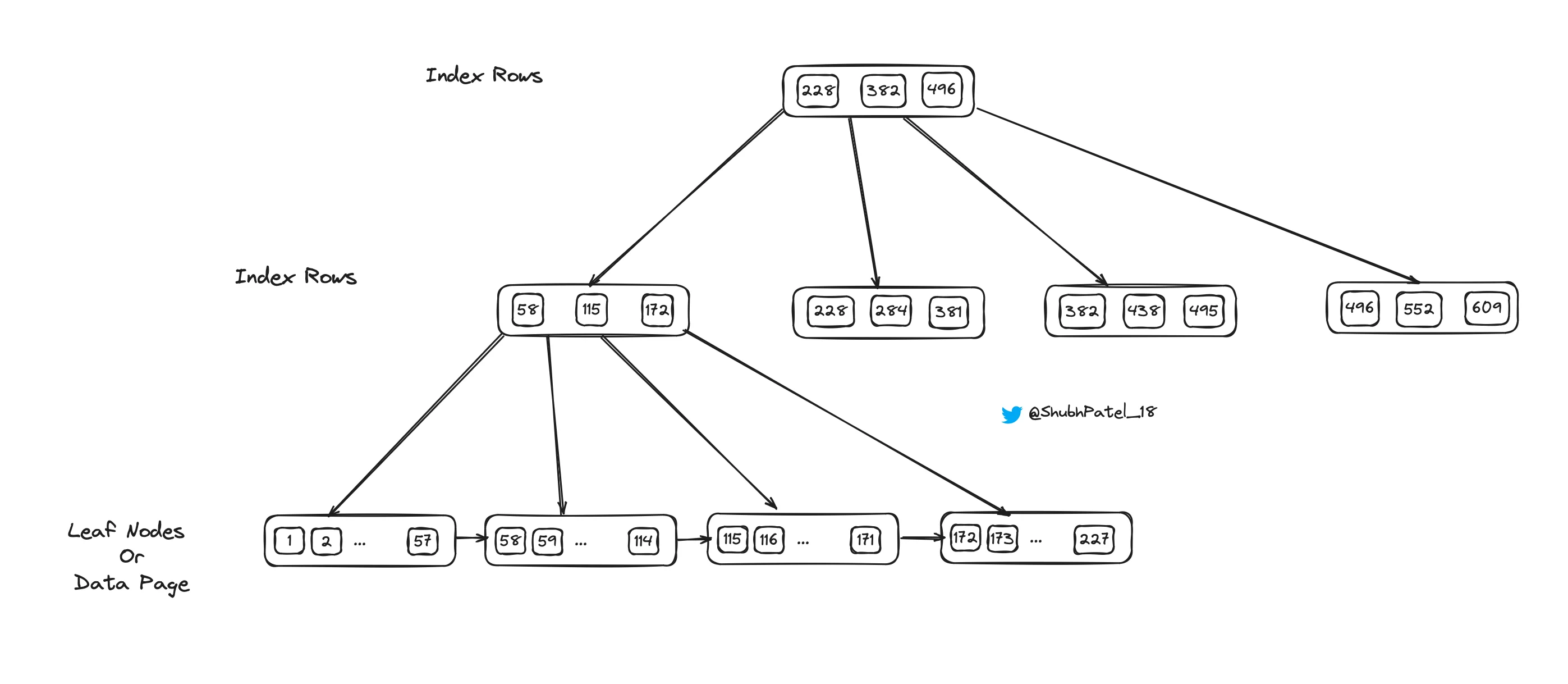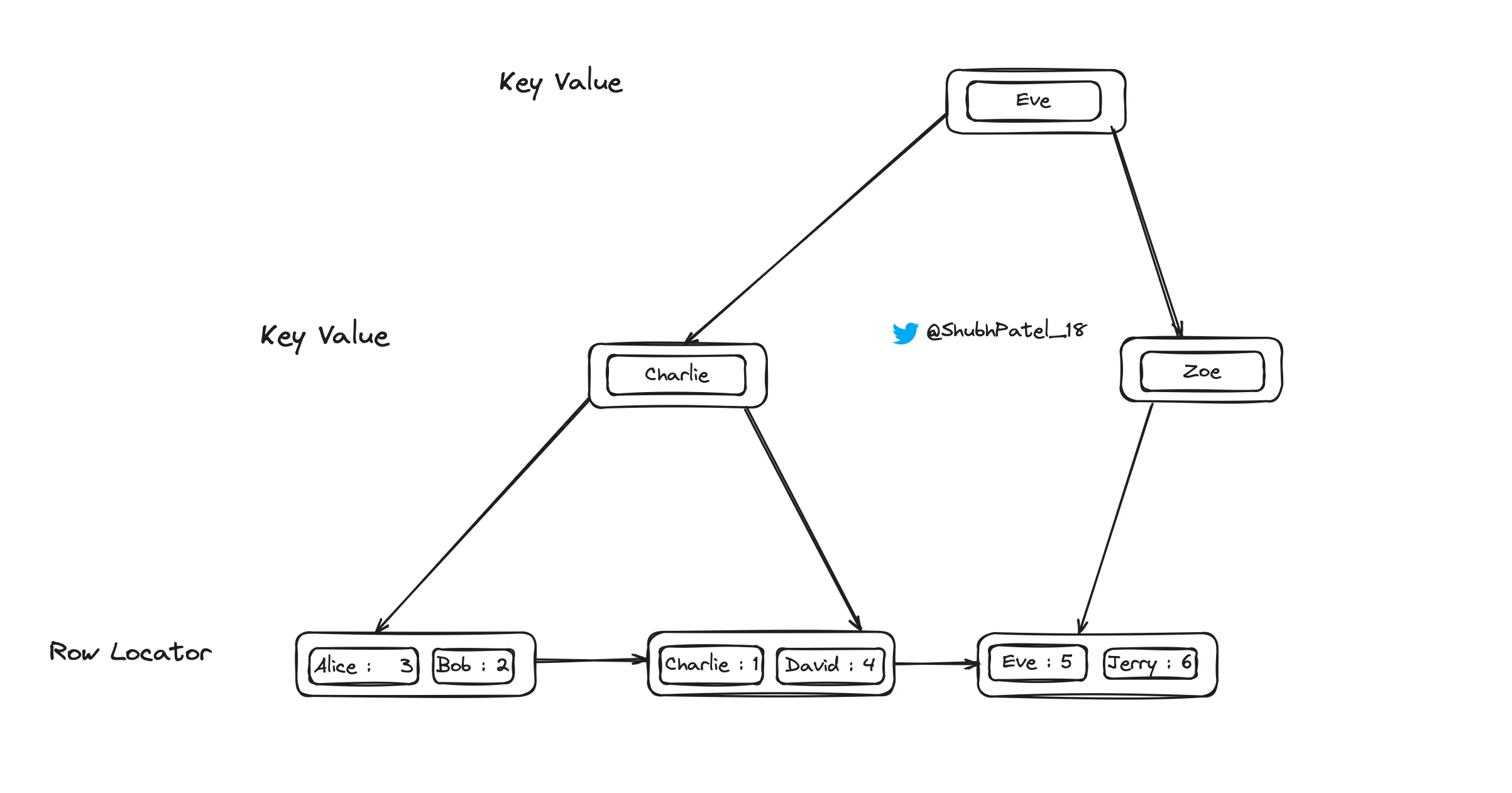Indexing
Indexing is a technique used in databases to speed up data retrieval. It acts like a roadmap, allowing the database to quickly find the data you are looking for, without having to scan every row. Let's explore how indexing works using the following Employee table example:
| ID | Name | Salary |
|---|---|---|
| 1 | Charlie | 60000 |
| 2 | Bob | 55000 |
| 3 | Alice | 50000 |
| 4 | David | 40000 |
| 5 | Eve | 45000 |
| 6 | Jerry | 48000 |
Why Use Indexing?
-
Query Efficiency: Suppose we want to find the salary of an employee by their ID or name:
SELECT salary FROM employee WHERE id = 3;The above query can efficiently return the salary of Alice, as it only needs to check one row.
SELECT salary FROM employee WHERE name = 'Jerry';This query, however, might need to scan multiple rows if there's no indexing on the 'name' column.
-
Data Storage Optimization: Each row's data occupies space, and efficient storage and retrieval mechanisms are essential for performance, especially with large tables.
Clustered Indexing
A clustered index defines the physical order of data in a table. It stores data rows sorted according to the index key, usually using a B+ Tree structure for quick access.
How Does Clustered Indexing Work?

Clustered Indexing
-
Primary Key as Clustered Index: By default, a primary key is often the clustered index. It organizes the data in the table by this key, allowing quick retrieval.
-
B+ Tree Structure:
-
Root and Non-leaf Nodes: They store keys to guide the search process.
-
Leaf Nodes: These contain actual data rows or pointers to data rows stored in data pages. The entire row, including columns like ID, Name, and Salary, is present in the leaf nodes.
-
-
Query Efficiency: For a query like SELECT salary FROM employee WHERE id = 3, the B+ Tree allows the database to navigate directly to the leaf node that contains the ID 3, reducing the number of disk accesses needed.
A clustered index improves data retrieval speed by storing data in sorted order according to the index key.
Efficiency of B+ Tree
-
Height and Breadth: A B+ Tree's efficiency is determined by the balance between the number of keys in each node and the tree's height. A well-balanced B+ Tree can handle millions of rows efficiently.
-
Disk Access: The height of the tree directly influences the number of disk accesses. More keys per node mean fewer levels and fewer disk accesses.
Non-Clustered Indexing
A non-clustered index creates a separate index structure that references the clustered index or primary key. It is used for columns that are frequently queried.

Non-Clustered Indexing
-
Separate from Data Storage: Unlike clustered indexes, non-clustered indexes do not change the physical order of data. They create a sorted list of index keys (like names) and pointers to actual data rows.
-
How It Works:
-
The B+ Tree for a non-clustered index sorts the 'name' column and includes pointers to the corresponding rows in the clustered index.
-
For example, searching for 'Jerry' navigates the B+ Tree, finds a pointer to ID 6, and then retrieves the full row.
-
A table can have multiple non-clustered indexes for different columns, enhancing query performance for various searches.
SQL Example
CREATE TABLE employee (
id INT PRIMARY KEY,
name VARCHAR(100),
salary DECIMAL(10, 2)
);
CREATE INDEX idx_employee_name ON employee(name);